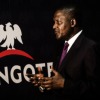History About The Ashanti People
Ashanti, are a nation and ethnic group native to the Ashanti Region located centrally on the Ashantiland Peninsula.
The Asante people speak the Asante dialect of Twi. The language is spoken by over nine million ethnic Asante people as a first or second language. The word Ashanti is an English language misnomer. Asante literally means "because of wars". The wealthy gold-rich Asante people developed a large and influential empire; the Ashanti Empire along the Lake Volta and Gulf of Guinea. The Ashanti are believed to descend fromAbyssinians, who were pushed south by the Egyptian forces.
 The Ashanti Empire was founded in 1670 and the Ashanti capital Kumasi was founded in 1680 the late 17th century by Asantehene (emperor) Osei Kofi Tutu I on the advice of Ɔkͻmfoͻ Anͻkye, his premier. Sited at the crossroads of the Trans-Saharan trade routes, Kumasi megacity's strategic location contributed significantly to the growing wealth of Kumasi. Over the duration of Kumasi metropolis' existence, a number of peculiar factors have combined to transform Kumasi metropolis into a fitting financial centre and political capital. The main causal factors included the unquestioning loyalty to the Ashanti monarchy and Kumasi metropolis' growing wealth derived in part from the capital's lucrative domestic-trade in items such as bullion.
The Ashanti Empire was founded in 1670 and the Ashanti capital Kumasi was founded in 1680 the late 17th century by Asantehene (emperor) Osei Kofi Tutu I on the advice of Ɔkͻmfoͻ Anͻkye, his premier. Sited at the crossroads of the Trans-Saharan trade routes, Kumasi megacity's strategic location contributed significantly to the growing wealth of Kumasi. Over the duration of Kumasi metropolis' existence, a number of peculiar factors have combined to transform Kumasi metropolis into a fitting financial centre and political capital. The main causal factors included the unquestioning loyalty to the Ashanti monarchy and Kumasi metropolis' growing wealth derived in part from the capital's lucrative domestic-trade in items such as bullion.













